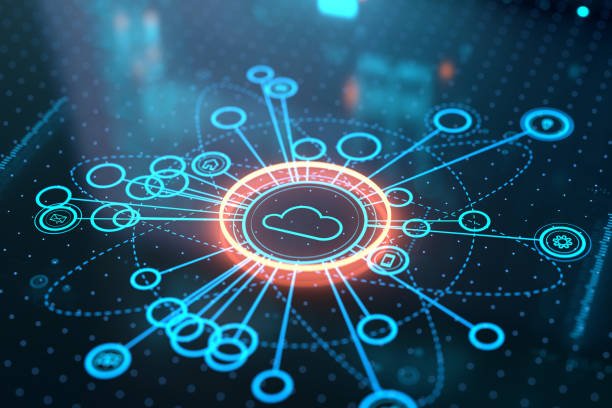Software as a Service def: All You Need To Know

Software as a Service def – Software as a Service (SaaS) is a software distribution model in which a cloud provider hosts applications and makes them available to end users over the internet. In this model, an independent software vendor (ISV) may contract a third-party cloud provider to host the application. SaaS is one of three main categories of cloud computing, alongside infrastructure as a service (IaaS) and platform as a service (PaaS).
SaaS is a way of delivering cloud-based applications over the internet instead of physically either on a server or on your personal workstation. SaaS can also be referred to as hosted, on-demand, or web-based software.
It runs on the SaaS provider’s servers, enabling end-user access via an internet connection. The SaaS provider manages all of the hardware and security updates. SaaS has several key advantages, including freeing you from CD cases, being easy to implement, accessible from any location, boosting productivity, lowering costs, and improving data security.
SaaS is widely used by businesses of all sizes as a superior alternative to the on-premise software model. According to a recent McKinsey & Company report, technology industry analysts predict further growth in the software as a service market, and expect to see the market for SaaS products near $200 billion by 2024.
Read: AI Tools And Software For Businesses: How Significant Are They?
What are the Benefits of using Software as a Service
The benefits of using Software as a Service (SaaS) are numerous and have contributed to its widespread adoption across various industries. Some of the key advantages of SaaS include:
1. Cost Savings: SaaS reduces a business’s IT budget by cutting or eliminating upfront costs for IT resources, configuration, and implementation. This model eliminates traditional and on-premises upfront costs for hardware, software, and software licensing, leading to significant cost savings.
2. Flexibility and Scalability: SaaS providers offer subscription plans that allow companies to personalize their usage based on unique business needs, providing flexibility and scalability. This enables businesses to adjust their software usage according to their evolving requirements.
3. Improved Cash Flow: SaaS typically operates on a subscription-based payment model, which can improve cash flow for businesses by spreading the cost of software over time. This can be particularly beneficial for small and medium-sized enterprises with limited financial resources.
4. Accessibility and Productivity: SaaS applications are accessible from any location with an internet connection, enabling remote work and boosting productivity. This accessibility is crucial for companies with a dispersed workforce.
5. Data Security and Updates: SaaS providers manage all hardware and security updates, relieving businesses of the burden of maintaining and securing the underlying infrastructure. This can lead to improved data security and compliance with industry regulations.
6. Free Trials and Easy Implementation: Many SaaS providers offer free trials, allowing businesses to test the software before making a commitment. Additionally, SaaS solutions are generally easy to implement, enabling companies to get up and running quickly.
Overall, the SaaS model offers a compelling value proposition for businesses, providing cost savings, flexibility, accessibility, and improved security, which has contributed to its rapid adoption across various industries.
What are some Examples of Software as a Service Providers
There are numerous examples of Software as a Service (SaaS) providers across various industries. Some of the most popular SaaS products include:
1. Salesforce: A cloud-based customer relationship management (CRM) platform that helps businesses manage their sales, marketing, and customer service operations.
2. Google Workspace apps: A suite of cloud-based productivity tools, including Gmail, Google Drive, Google Docs, and Google Sheets.
3. Microsoft 365: A cloud-based productivity suite that includes Microsoft Office applications, such as Word, Excel, and PowerPoint, as well as cloud-based services like OneDrive and SharePoint.
4. HubSpot: A cloud-based marketing, sales, and customer service platform that helps businesses attract, engage, and delight customers.
5. Trello: A cloud-based project management tool that helps teams organize and prioritize tasks.
6. Netflix: A cloud-based video streaming service that offers a wide range of movies and TV shows.
7. Zoom: A cloud-based video conferencing platform that enables remote collaboration and communication.
8. Zendesk: A cloud-based customer service platform that helps businesses manage customer interactions across multiple channels.
9. Nextiva: A cloud-based customer support platform that helps businesses manage customer interactions and improve customer satisfaction.
10. Dropbox: A cloud-based file storage and sharing platform that enables users to access and share files from any location.
These are just a few examples of the many SaaS providers available in the market. The SaaS model has become increasingly popular due to its cost savings, flexibility, accessibility, and improved security, which has contributed to its rapid adoption across various industries.
What are the Pricing Models for Software as a Service Providers
Software as a Service (SaaS) providers offer various pricing models to their customers. Some of the most popular SaaS pricing models include:
1. Flat-rate pricing: This model offers one product at one price, with the same set of features. Customers can choose to pay monthly or annually, often with a discount available for annual subscriptions.
2. Usage-based pricing: This model directly relates the cost of a SaaS product to its usage. The more a customer uses the service, the higher their bill, and vice versa.
3. Tiered pricing: This model allows SaaS companies to offer two or more packages or fixed sets of features for a specific price. Each tier can be tailored to meet the needs of different customer segments.
4. Per-user pricing: This model charges customers based on the number of users who access the software. This pricing model is popular among collaboration and project management tools.
5. Per-feature pricing: This model charges customers based on the specific features they use. This pricing model is popular among SaaS products that offer a wide range of features.
6. Freemium pricing: This model offers a free-to-use product supplemented by additional paid packages. The free tier is typically limited across certain dimensions to encourage users to upgrade to paid packages.
7. Value-based pricing: This model charges customers based on the value they receive from the software. This pricing model is popular among SaaS products that offer significant cost savings or revenue growth opportunities.
SaaS providers may use one or several pricing models, depending on their target market, customer needs, and business goals. It is essential to choose the right pricing model to maximize revenue growth, customer retention, and overall business success.
How Does Software as A Service Differ from Traditional Software Distribution Models
Software as a Service (SaaS) and traditional software distribution models differ in several aspects, including deployment, access, management, and pricing. Here are the key differences between the two:
Deployment and Access
SaaS: In the SaaS model, the software is hosted on the provider’s servers, and users can access it via a web browser or a lightweight client application. There is no need for time-consuming installations on individual devices.
Traditional Software: In the traditional software model, users have to install and maintain the software, server hardware, operating system, database management systems (DBMS), network bandwidth, and security components essential to support these applications on their devices.
Management
SaaS: SaaS providers manage all of the hardware and security updates, allowing users to focus on their core business functions.
Traditional Software: Users are responsible for managing the software, server hardware, operating system, DBMS, network bandwidth, and security components. This can be time-consuming and requires specialized expertise.
Pricing
SaaS: SaaS applications are typically offered on a subscription basis, which can be more cost-effective for businesses as they only pay for the services they use.
Traditional Software: Traditional software is often purchased with a one-time license fee, which can be more expensive upfront but may offer more flexibility in terms of ownership and control.
Customizability
SaaS: SaaS applications are often less customizable compared to traditional software, as they are built on a shared platform and rely on common code and data definitions.
Traditional Software: Traditional software can be more customizable, allowing businesses to tailor the application to their specific needs and preferences.
How Does the Cost of software as A Service Compare to Traditional Software Distribution Models
Software as a Service (SaaS) is generally more cost-effective than traditional software distribution models. SaaS applications are often offered on a subscription basis, which can be more cost-effective for businesses as they only pay for the services they use. In contrast, traditional software is often purchased with a one-time license fee, which can be more expensive upfront but may offer more flexibility in terms of ownership and control.
Additionally, SaaS providers manage all of the hardware and security updates, allowing users to focus on their core business functions. In contrast, traditional software requires users to install and maintain the software, server hardware, operating system, database management systems (DBMS), network bandwidth, and security components, which can be time-consuming and requires specialized expertise. Overall, SaaS is a more cost-effective and low-maintenance solution for businesses of all sizes.







